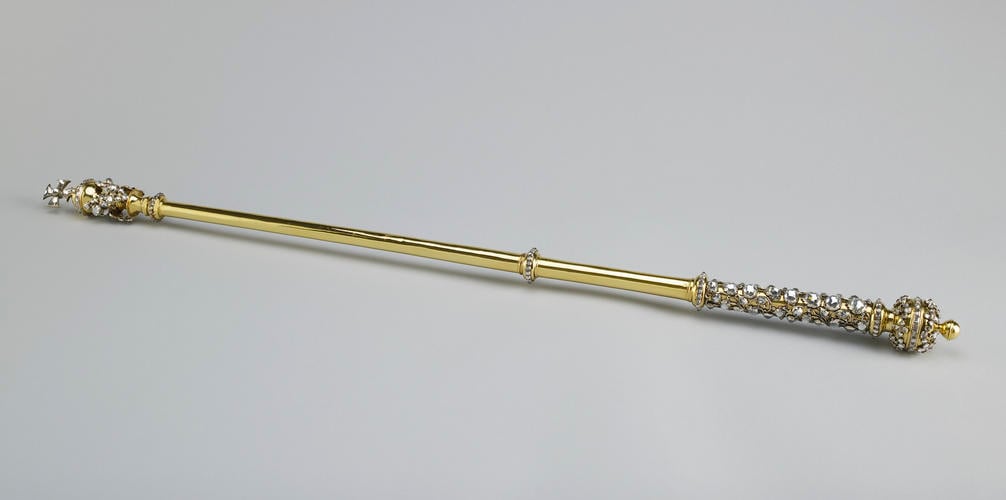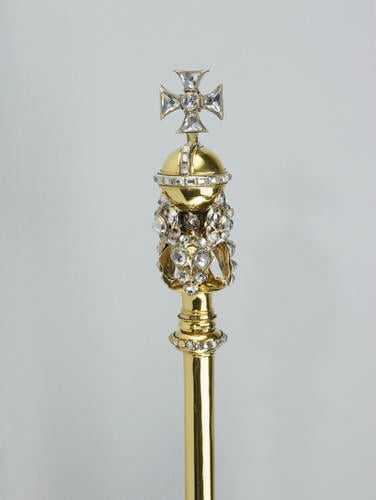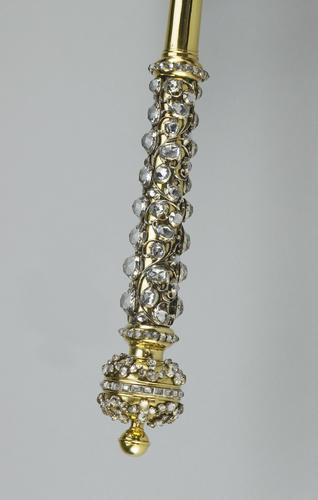Queen Consort's Sceptre with Cross 1685
Gold, silver, rock crystals (quartzes) | 65.5 cm (whole object) | RCIN 31715
-
The sceptre is formed from a gold rod in three sections, tapering towards the top, and is surmounted by a monde with a zone and arc of moulded gold set with table-cut stones (quartzes), with a cross above mounted with rose-cut and shaped quartzes. The monde sits in a bracket of quartz-set petals representing a fleur-de-lis. The sections of the rod are joined by collars similarly mounted with rose-cut stones; the lowest section with a silver openwork sleeve set with rose-cut stones arranged as scrolls. The gold pommel is mounted with a silver band set with table- and rose-cut quartzes.
If a sovereign is married at the time of his coronation, it is usual for the queen consort to be crowned with him. The coronation of the queen takes place in a short ceremony after the king has been enthroned and has received the homage of the congregation. The queen consort receives some of the same ornaments as her husband including a ring and two sceptres - this one surmounted by a cross and another surmounted by a dove (which represents the Holy Ghost).
As the first Queen Consort to participate in the coronation ceremony since the Restoration of the monarchy, Mary of Modena required a set of regalia, which was supplied by the royal goldsmith in 1685. The commission included this Consort's Sceptre with Cross which would originally have been mounted with diamonds and other precious stones, which were hired for the coronation and later replaced with rock crystals. The sceptre has been used by every subsequent Queen Consort.Provenance
Supplied for the coronation of Mary of Modena, consort of James II, in 1685 by the royal goldsmith, Sir Robert Vyner.
-
Creator(s)
(retailer/supplier)Acquirer(s)
-
Medium and techniques
Gold, silver, rock crystals (quartzes)
Measurements
65.5 cm (whole object)
720.0 g (Weight) (whole object)










